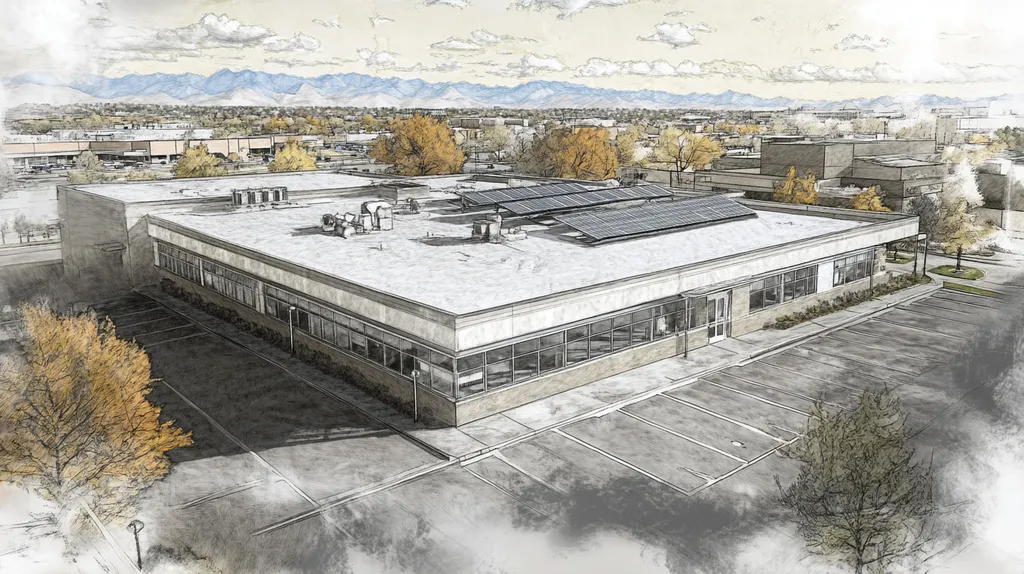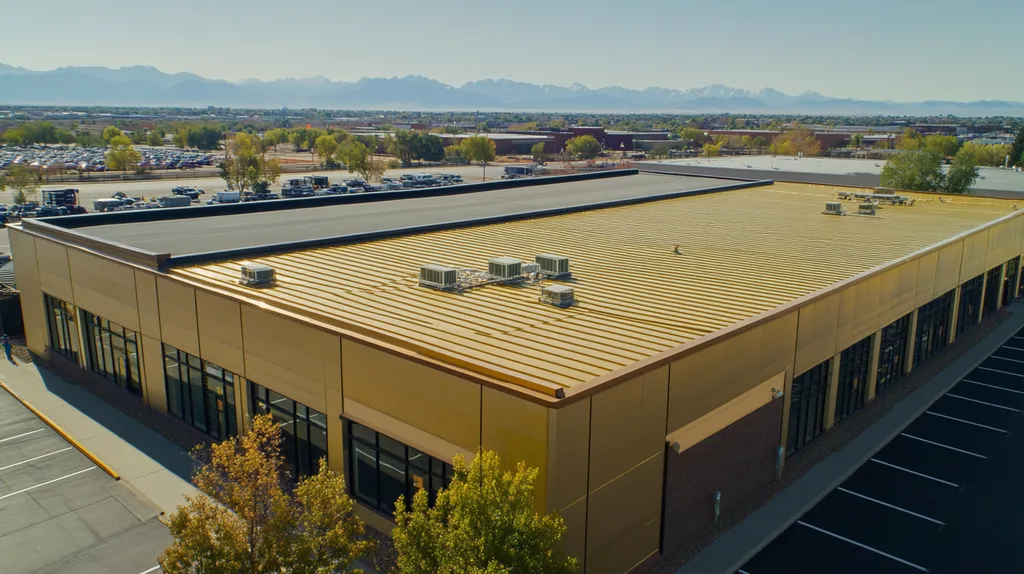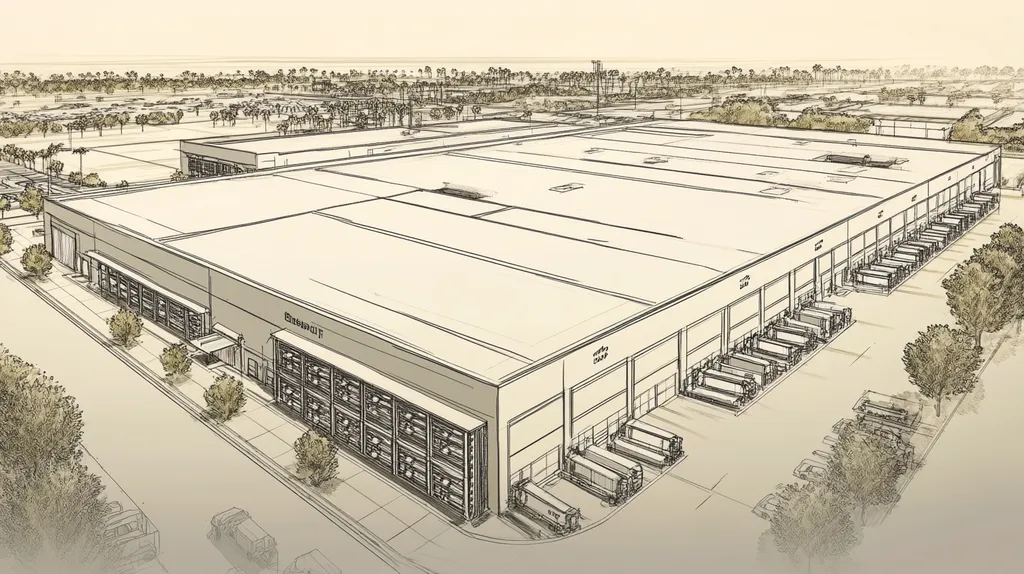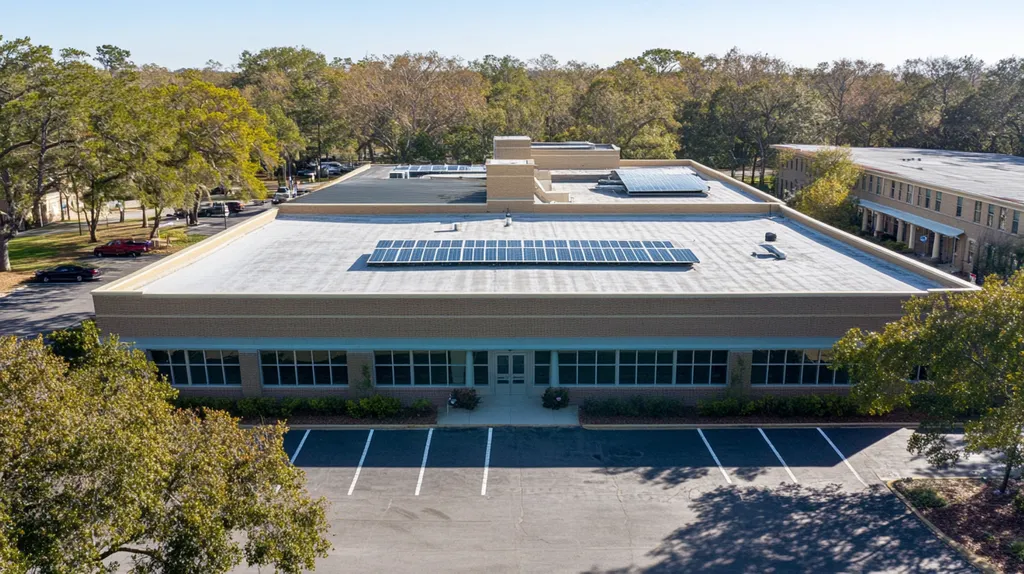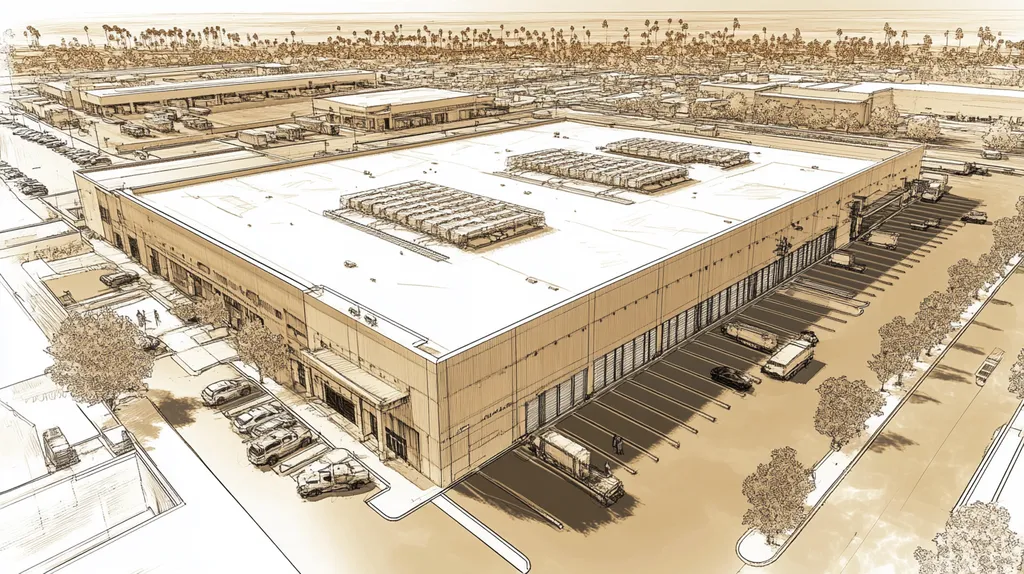Commercial property owners face mounting pressure to adopt sustainable roofing practices, with energy costs rising 12% annually and environmental regulations becoming increasingly strict. Recent industry data shows that sustainable roof repairs can reduce building energy consumption by up to 30% while extending roof lifespan by 15-20 years.
Yet many facility managers struggle to navigate the complex landscape of eco-friendly materials, compliance requirements, and performance metrics when planning repairs. The consequences of poor choices can be severe – from increased operating costs to regulatory penalties.
This comprehensive guide provides facility managers with actionable strategies for implementing sustainable roof repairs while maximizing return on investment through enhanced energy efficiency, extended material lifespans, and regulatory compliance.
SECTION 1: PERFORMANCE FACTORS
As the demand for sustainable roof repair options intensifies, facility managers face an essential responsibility. With energy prices climbing and environmental regulations becoming stricter, making smart roofing choices is critical. Since commercial buildings account for almost 40% of energy usage in the U.S., sustainable roofing practices not only protect the planet but also reduce the operational costs significantly.
Energy Efficiency Metrics
Understanding energy efficiency is crucial when assessing roofing options. A well-maintained roof can enhance a building’s energy performance by up to 30%. For instance, reflective roofing materials can minimize heat absorption, translating into lower cooling costs – especially in warmer climates. When considering repair materials, evaluating their thermal performance can lead to notable energy savings.
Facilities managers should be aware of their roofing systems’ energy ratings. Innovative buildings utilize advanced insulation and reflective surfaces to cut down on HVAC reliance. This strategy isn’t just popular; it’s a reliable method to meet energy-efficient standards.
Moreover, opting for energy-efficient materials can open the door to various tax credits and rebates. By making informed roofing decisions, facility managers can maximize their budgets while striving for sustainability.
Key Action Items
Structural Integrity Assessment
The structural integrity of a roof significantly impacts its lifespan. Many roofs underperform due to neglected maintenance, often resulting in expensive repairs or complete replacements. Conducting a thorough assessment can reveal weaknesses and highlight sustainable repair options that enhance durability.
Common signs of structural issues include moisture intrusion and inadequate insulation. Solutions like roof coatings provide a waterproof barrier and can extend the lifespan of existing systems. By taking proactive measures, facility managers can avert larger damages and the need for total replacements.
For commercial properties, regular inspections are vital. Utilizing technology like drones or infrared cameras enables efficient identification of problem areas without risking damage to the roof. Frequent assessments help uncover sustainable materials that bolster strength and environmental responsibility.
Key Action Items
Environmental Impact Evaluation
The choices made in roof repair directly influence the environment and should never be underestimated. Many conventional roofing materials contain harmful chemicals that pollute air quality. By opting for sustainable alternatives, these negative impacts can be dramatically reduced.
Choosing eco-friendly roofing products made from recycled resources can significantly decrease a building’s carbon footprint. Additionally, green roofs not only enhance insulation but also help manage stormwater runoff, offering substantial benefits to urban ecosystems.
Conducting lifecycle assessments of roofing materials ensures facility managers select options that minimize adverse environmental effects. Recognizing the influence of roofing choices on local ecosystems can instill a commitment to sustainability throughout building operations.
Key Action Items
SECTION 2: FINANCIAL CONSIDERATIONS
The choice between repairing or replacing a commercial roof goes beyond mere upfront costs. With energy expenses on the rise and regulations evolving, selecting sustainable roofing options is crucial for facility managers and property owners alike. Investing in eco-friendly materials not only influences budget decisions but can also yield long-term financial benefits. Understanding these financial implications is essential for making informed roofing choices.
Cost-Benefit Analysis of Sustainable Options
Undertaking a comprehensive cost-benefit analysis is vital when considering sustainable roofing options. This analysis should factor in initial installation costs alongside potential savings from energy efficiency and material longevity. For instance, green roofs can diminish heating and cooling expenses by up to 25%, thanks to their superior insulation properties.
Despite a potentially higher upfront investment in sustainable materials like TPO or standing seam metal, their benefits can be substantial over time. Their enhanced durability often results in less frequent replacements, thereby lowering overall lifecycle costs.
Additionally, the value of the property may increase with energy-efficient roofing solutions. Buildings that feature such roofing typically attract higher-paying tenants, leading to improved revenue potential. Recognizing both the tangible and intangible advantages is crucial for fiscal planning.
Key Action Items
Government Incentives and Tax Credits
Government incentives are essential for facilitating financially viable sustainable roof repairs. Various programs available at federal, state, and local levels aim to encourage eco-friendly construction practices, which can significantly alleviate costs for property owners.
For example, federal tax credits for energy-efficient roof replacements currently provide valuable financial relief. Numerous states further enhance this by offering direct rebates for solar energy installations and green roofing systems, making these options increasingly attractive.
Facility managers should keep abreast of local and national legislation. Properly leveraging these incentives can drastically reduce capital expenditures. A proactive approach to capitalizing on government funding can unlock substantial savings.
Key Action Items
Long-Term Cost Savings and ROI
Investing in sustainable roofing solutions can lead to significant long-term cost savings. Facility managers should consider the total cost of ownership, which includes energy savings, maintenance expenses, and potential tax incentives throughout the lifespan of a roof.
For example, a commercial building outfitted with solar panels can see energy bill reductions of up to 70%. The durability associated with sustainable materials contributes to a decrease in repairs and maintenance costs, offering additional financial relief.
Evaluating return on investment (ROI) is essential. Comparing the expected lifespan of roofing materials against initial investments provides a clearer forecast of long-term savings potential.
Ultimately, sustainable roofs not only reduce expenses but also bolster operational efficiency. The cumulative savings and enhanced property appeal provide a strong rationale for considering sustainable options in the long run.
Key Action Items
SECTION 3: COMPLIANCE REQUIREMENTS
Ensuring compliance with building codes and environmental regulations is vital for maintaining operational integrity. Ignoring these requirements can lead to expensive fines and safety hazards. A recent study showed that 68% of renovation projects exceeded budgets because of compliance issues. For facility managers, understanding the ins and outs of these compliance requirements is crucial when embarking on sustainable roof repair projects.
Building Codes and Regulations
Building codes are established to guarantee the safety, durability, and performance of structures. Different regions have specific codes, which may outline material standards and installation methods. For instance, certain areas may require specific types of insulation or roof pitches to withstand local weather conditions.
Before starting any roofing repairs, facility managers should familiarize themselves with local building codes. This entails confirming that chosen materials comply with fire ratings and reflectivity requirements. Failing to meet these standards can result in costly rework and project delays.
Furthermore, some codes may necessitate upgrades to existing roofs during replacement projects. Having a clear understanding of these requirements can enhance the repair process while ensuring solutions are effective and compliant.
Key Action Items
LEED Certification and Sustainability Standards
LEED certification represents a key goal for sustainable building practices. Roof repairs can impact a facility’s eligibility for LEED certification, particularly when using eco-friendly materials. For example, reflective roofing systems help in achieving energy efficiency credits within LEED guidelines.
When planning repairs, facility managers should select materials that promote sustainability. Options may include “cool” roofs or systems creatively designed to capture rainwater for irrigation. Each of these selections can positively enhance a building’s overall sustainability profile.
Additionally, pursuing LEED certification can increase property value and attract environmentally conscious tenants. Evaluating repair choices that align with these sustainability standards while considering long-term energy savings is essential.
Key Action Items
Local and Federal Environmental Compliance
Environmental compliance covers both local regulations and federal guidelines aimed at reducing ecological impacts. Facilities must ensure their roofing repair practices meet these standards, especially regarding waste disposal and material usage. Certain adhesives and chemicals may be restricted by the EPA, requiring careful selection.
A successful waste management strategy is also crucial. By adopting sustainable disposal methods, such as recycling old roofing materials, facilities can fulfill compliance standards while demonstrating a commitment to sustainability. Ignoring these requirements can lead to substantial fines and legal repercussions.
Facilities located in environmentally sensitive regions may face stricter regulations. Recognizing and addressing these specific requirements is vital for executing compliant and responsible roofing repairs.
Key Action Items
SECTION 4: RISK MANAGEMENT
Effective risk management is essential to ensure sustainable roof repairs do not inadvertently create environmental or safety hazards. Water damage, a leading cause of structural deterioration, costs commercial property owners millions each year according to the Environmental Protection Agency. Facility managers must face these risks proactively to protect their investments while championing sustainability. This section will discuss identifying environmental risks, strategies to mitigate water damage, and best practices for ensuring worker safety through eco-friendly solutions.
Identifying Potential Environmental Risks
The first step in managing risk for roof repairs is to recognize environmental challenges. A common issue is poor drainage, which can cause water to pool and lead to leaks. Regular roof assessments can help facility managers spot these vulnerabilities before they become costly problems.
Another consideration is the environmental impact of repair materials. Synthetic roofing products might introduce more pollutants than natural alternatives. Understanding the benefits of sustainable materials can help in making responsible choices that mitigate such risks.
Moreover, weather conditions can affect roofing durability. Extreme temperatures, whether heat or cold, can degrade materials more quickly, increasing repair needs. Addressing these concerns early on is crucial in managing overall risk.
Additionally, external pollution can accelerate roof wear. Recognizing how environmental factors interact with roofing materials is vital for developing more resilient and effective roofing systems.
Key Action Items
Mitigating Water Damage and Leaks
Water damage is a significant concern that can stem from poor repairs or the use of inadequate materials. Facility managers should implement thorough inspection protocols to catch leaks early. Investing in top-quality waterproofing measures can significantly reduce the risk of costly water damage.
Green roofs can enhance drainage and provide insulation, offering a sustainable solution that also improves water management. These systems not only hold moisture but can also minimize runoff with proper upkeep.
It’s critical to evaluate drainage systems, ensuring gutters and downspouts are up to the task of handling heavy rainfall. This helps to prevent unwanted pooling that can lead to leaks.
Choosing reflective roofing materials can alleviate the wear and tear caused by temperature fluctuations, thereby extending the lifespan of the roof and reducing future repairs. Taking these proactive steps contributes to both water damage prevention and sustainability.
Key Action Items
Ensuring Worker Safety with Eco-Friendly Products
Worker safety remains a top priority during roofing repairs, especially when using eco-friendly materials. Many traditional roofing solutions contain hazardous chemicals, posing health risks during installation. Transitioning to low-VOC (volatile organic compounds) and other environmentally safe options significantly lessens these dangers.
Prioritizing training programs on proper handling of eco-friendly materials is vital. A knowledgeable team is essential for a safe and productive work environment.
Providing appropriate personal protective equipment (PPE) is crucial. Even eco-friendly products can pose some risks, so ensuring that workers are equipped with the right gear is non-negotiable for maintaining safety.
Lastly, establishing safety protocols encouraging regular breaks, hydration, and maintaining a tidy workspace contributes to worker health during roofing projects. An investment in safety not only protects workers but also enhances overall project productivity.
Key Action Items
SECTION 5: OPERATIONAL PROCEDURES
As the landscape of commercial roofing changes, the emphasis on sustainable operational procedures is more important than ever. Regular inspections and proactive maintenance not only extend the life of a roof but also help minimize its environmental impact. According to the National Roofing Contractors Association, neglecting maintenance can lead to roof failures, costing businesses significantly in repairs and replacements. By implementing effective operational strategies, facility managers can conserve valuable resources while protecting their investments.
Routine Inspection and Maintenance Schedules
Establishing a reliable inspection and maintenance schedule is vital for sustainable roof management. Regular evaluations can pinpoint minor issues before they escalate into major concerns. For example, a simple leak, if ignored, can lead to serious water damage and mold growth, resulting in extensive repair costs and health risks.
Facility managers should aim to perform inspections at least twice a year, ideally in spring and fall. This regularity helps monitor roof wear from changing weather conditions. Utilizing a checklist during these assessments can streamline the process and ensure all critical areas are thoroughly evaluated.
Incorporating routine maintenance tasks like gutter and drain cleaning can prevent water pooling, which accelerates roof deterioration. By adopting these proactive measures, facility managers can reduce the likelihood of emergency repairs while enhancing the roof’s sustainability. Documenting each inspection creates a valuable maintenance history for future repairs, promoting operational efficiency and supporting sustainability objectives.
Key Action Items
Using Biodegradable and Recycled Materials
The choice of materials used for roof repairs plays a crucial role in promoting sustainability. By opting for biodegradable and recycled materials, businesses can significantly reduce landfill waste and the carbon footprint associated with roofing projects. For instance, roofing membranes made from recycled rubber or TPO are both durable and eco-friendly.
Furthermore, using products with a low Environmental Impact Rating can appeal to environmentally conscious tenants or customers. This commitment to sustainability could potentially lead to higher occupancy rates and increased customer satisfaction.
Facility managers should also prioritize sourcing local materials to minimize transportation emissions and support the local economy. Brands that focus on recycled content help meet green building standards while offering cost-effective solutions in the long run. Employing biodegradable sealants and adhesives in roof repairs further enhances sustainability, as these products naturally decompose over time, reducing environmental harm compared to conventional options.
Key Action Items
Implementing Green Roof and Solar Panel Maintenance
Green roofs and solar panels are outstanding sustainable solutions but require specialized maintenance strategies to ensure they function effectively. Regular checks on plant health and irrigation systems are critical for green roofs, as proper care promotes biodiversity and manages stormwater efficiently.
Green roofs can also help lower urban heat, reducing cooling costs, but they require seasonal inspections to maintain plant integrity and drainage systems. Facility managers should align maintenance schedules with seasonal changes to optimize these systems.
For solar panels, keeping the surface free from debris and dirt is crucial for peak performance. Regularly cleaning the solar panels boosts energy generation, which can lead to significant cost savings. Annual inspections should also be scheduled to check for wiring issues and assess overall functionality. By integrating these practices, facility managers not only prolong the lifespan of these systems but also ensure compliance with sustainability certifications, making their facilities more appealing to eco-minded organizations and tenants.
Key Action Items
SECTION 5: OPERATIONAL PROCEDURES
In the rapidly evolving landscape of commercial roofing, adopting sustainable operational procedures is more important than ever. Regular inspections and proactive maintenance not only extend a roof’s lifespan but also minimize its environmental footprint. The National Roofing Contractors Association highlights that neglecting maintenance can result in costly roof failures, which affect both financial resources and ecological health. Facility managers must prioritize effective operational strategies to conserve resources and safeguard their investments.
Routine Inspection and Maintenance Schedules
Establishing a dependable inspection and maintenance schedule is vital for sustainable roof management. By conducting regular assessments, facility managers can catch small issues before they escalate into costly problems. For instance, a minor leak can evolve into significant water damage and mold growth, leading to extensive repair costs and health hazards.
It’s advisable for facilities managers to conduct inspections at least twice a year, ideally during spring and fall. This schedule ensures effective monitoring of wear and tear caused by changing weather conditions. Employing a checklist during these assessments streamlines the process and guarantees that all critical areas are thoroughly evaluated.
In addition, routine maintenance tasks like cleaning gutters and drains can prevent water pooling, a common issue that accelerates roof deterioration. Implementing these proactive measures reduces the likelihood of emergency repairs and enhances the roof’s sustainability. Maintaining thorough documentation of each inspection also creates a valuable history for future reference, improving operational efficiency and minimizing resource consumption.
Key Action Items
Using Biodegradable and Recycled Materials
The choice of materials for roof repairs significantly impacts sustainability efforts. By utilizing biodegradable and recycled materials, facilities can substantially diminish landfill waste and reduce the carbon footprint of their projects. For instance, opting for roofing membranes made from recycled rubber or TPO achieves both durability and environmental friendliness.
Incorporating products with a low Environmental Impact Rating can also appeal to eco-conscious tenants or customers. This commitment to sustainability might lead to higher occupancy rates and greater overall satisfaction. Facilities managers should prioritize sourcing local materials to decrease transportation emissions and support the local economy, providing a more sustainable option.
Furthermore, using biodegradable sealants and adhesives enhances sustainability efforts. These products decompose naturally over time, causing less environmental harm compared to traditional options, thus contributing to greener construction practices.
Key Action Items
Implementing Green Roof and Solar Panel Maintenance
Green roofs and solar panels are exemplary sustainable solutions but require tailored maintenance strategies to maximize their effectiveness and lifespan. Regular evaluations of plant health and irrigation systems are essential for green roofs, as proper care fosters biodiversity and efficiently manages stormwater.
While green roofs can contribute to reducing urban heat and lowering cooling costs, they necessitate seasonal inspections to sustain plant integrity and functionality. Facilities managers should coordinate maintenance tasks with changing seasons to keep these systems in optimal condition.
For solar panels, ensuring a clear surface free from debris is crucial for peak performance. Routine cleaning enhances energy generation, leading to notable cost savings. Scheduling annual assessments of wiring and functionality also supports overall system performance. By integrating these maintenance practices, facility managers enhance the durability of their systems and ensure compliance with sustainability certifications, making their facilities attractive to eco-focused organizations and tenants.
Key Action Items
Looking Ahead
With commercial buildings accounting for nearly 40% of U.S. energy consumption and roofing costs rising 12% annually, sustainable roof repairs are no longer optional – they’re imperative for operational viability.
The data is clear: properties implementing sustainable roofing solutions see up to 30% reduction in energy costs and 15-20 year increases in roof lifespans.
Success requires a systematic approach integrating performance metrics, compliance requirements, and risk management strategies.
By leveraging available tax incentives, adopting green technologies, and following proper maintenance protocols, facility managers can dramatically reduce both environmental impact and long-term costs.
The future of commercial roofing lies in sustainability – those who adapt early will gain significant competitive advantages in an increasingly regulated marketplace.
FREQUENTLY ASKED QUESTIONS
Q. What performance factors should I consider for a commercial roof?
A. It’s important to assess energy efficiency, structural integrity, and thermal performance of materials. Implementing reflective roofing and innovative insulation solutions can significantly boost energy performance. Regular energy audits help optimize sustainability and reduce operational costs.
Q. How can financial considerations impact my industrial roof repairs?
A. Performing a cost-benefit analysis allows you to weigh upfront costs against long-term energy savings and material longevity. Investing in sustainable options, like eco-friendly materials, often results in lower lifecycle costs, reducing future financial burdens.
Q. What compliance requirements should I know for a commercial roof?
A. Familiarize yourself with local building codes and environmental regulations to avoid costly fines. Ensure all materials meet required standards and check for updates on codes and regulations frequently, especially for sustainable options.
Q. How can I manage risks during sustainable roof repairs?
A. Identify environmental risks such as poor drainage that may lead to water damage. Invest in quality waterproofing solutions. Regular inspections help catch leaks early and mitigate structural risks while promoting sustainability in repairs.
Q. What operational procedures should I follow for commercial roof maintenance?
A. Establish a routine inspection schedule and prioritize maintenance tasks like cleaning gutters. Use checklists for consistent evaluations and address minor issues promptly to prevent costly repairs while enhancing sustainability.
Q. What materials can I use to promote sustainability in roof repairs?
A. Opt for biodegradable and recycled materials such as TPO or rubber membranes. These products reduce landfill waste and carbon footprints, while appealing to eco-conscious tenants and promoting sustainability in your operations.
Q. How do green roofs benefit commercial properties?
A. Green roofs enhance insulation, manage stormwater, and lower urban temperatures. They can contribute to energy savings and may also attract environmentally conscious tenants, providing both ecological and economic benefits to your property.


